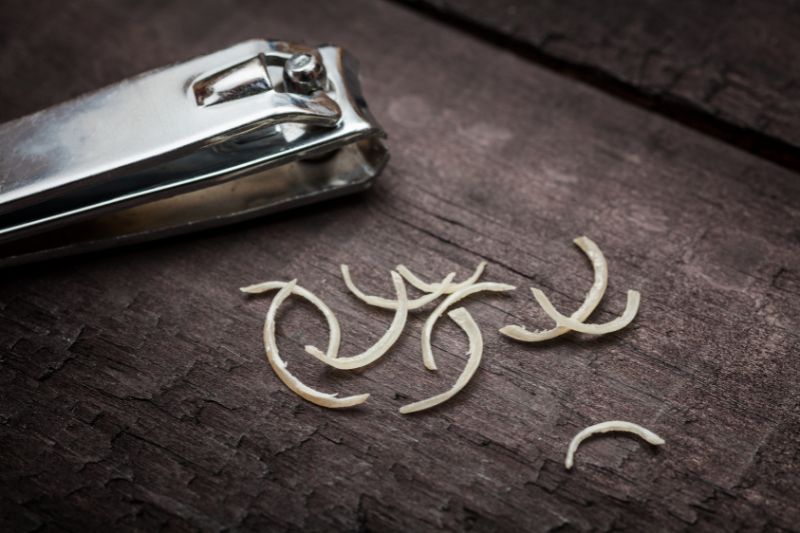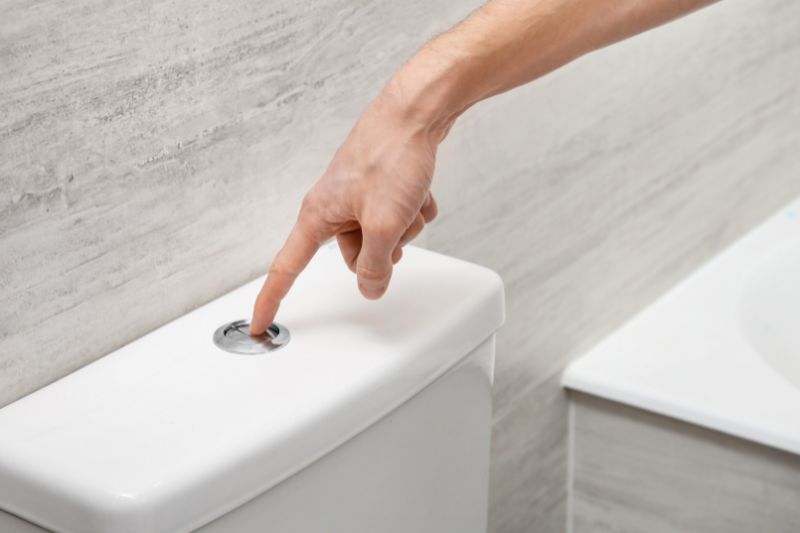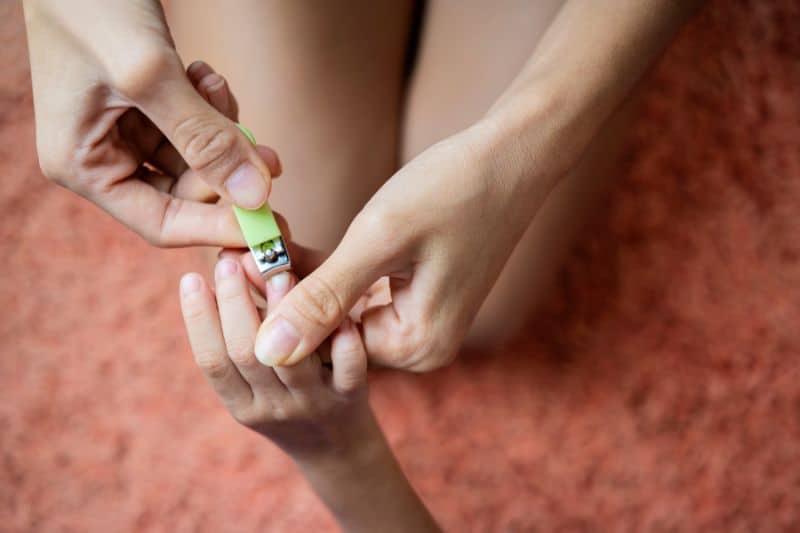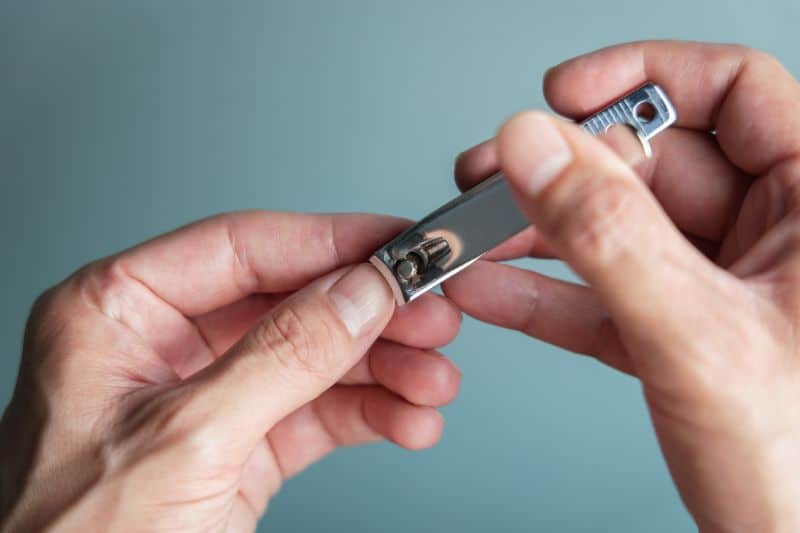Impatience, frustration, boredom, concentration, stress, and anxiety are different human feelings and can be characterized by one trait: biting one’s nails. Many people bite their nails at some point, especially as children, and it is a habit that cannot be fully explained.
Nails are an important part of the human body and must be kept clean since they grow daily and collect a lot of dirt. After clipping them, the majority of the people simply throw them away.
But is there anything better that can be done with your trimmed nails? Can they be composted and used to better the health of your garden and plants? This article looks into composting fingernails.
Are Nail Clippings Compostable?
Yes, nail clippings are completely compostable. Like human hair, fingernail, and toenail clippings can be composted, meaning these parts of the human body that have for years been sentenced to the trash can end up helping in the composting bin.
The same applies to animal claw clippings. Although neither adds a lot of bulk to the heap, unless you have lots, they will be fine inside the composting bin.
However, there are specific types of nails that should not be composted. These are excessively polished nails, real or fake, and fake nails or acrylics. The compostable nail clippings should be free from all nail polish, and if you happen to use peanuts to keep your toes apart during a pedicure, compost those as well.
The problem with composting polished nails is that the polish and its removers are considered hazardous waste because they are toxic and flammable. The chemicals in the polish will leech into the compost and continue into the garden, poisoning it and the plants.
Acrylic nails, on the other hand, are simply non-biodegradable. They are a combination of a liquid monomer and a powder polymer that creates a hard protective layer over your natural nails. As they are non-biodegradable, do not compost them.
But then, even the compostable types, it’s worth mentioning that nails contain heavy metals from the environment and can, therefore, take a while to fully biodegrade and become compost.
Even then, their slow decomposition comes with an advantage — it lets them serve as a gradual source of nitrogen, a crucial component in the composting process, along with carbon.
The disintegration of human nails depends on the environment and the presence of relevant microorganisms. Microorganisms, bacteria, and other life forms play a key role in breaking down nails, with their waste contributing to the production of carbon dioxide and ammonia.
However, although compostable, it’s worth noting that fingernails are not digestible, and activities like biting or fiddling with them can pose risks, potentially causing harm.
Furthermore, discarded nails can be hazardous to birds, such as pigeons and sparrows, which may mistake them for food. Ingested, these indigestible elements may lead to the death of birds. Therefore, it’s important to handle nail clippings with care and responsibly consider composting them.

Are Fingernails Biodegradable?
Yes, fingernails are biodegradable. Nails are made of keratin, a type of protein that makes them biodegradable. However, keratin is one of the tougher sides of proteins and takes a long time to decompose, explaining why the process takes a while.
This is why human hair and nails have been found in archaeological excavations, although not universally. Human nails disintegrate faster or slower depending on the environment and the presence of relevant microorganisms.
Acrylic nails are a combination of a liquid monomer and a powder polymer that creates a hard protective layer over your natural nails. This makes them non-biodegradable and should, therefore, not be composted.
Are Nail Clippings Good for Plants?
Yes, fingernails are suitable for plants. Again, to best understand this, we have to go back to keratin and biotin, the components that make fingernails. Keratin is a naturally occurring protein and contains small amounts of calcium and phosphorus.
In case you did not know, the two are wealthy soil nutrients and have significant benefits to plants. Well, you can also argue that since the fingernails are tiny, the phosphorous and calcium will not be significant enough to be beneficial to plants.
However, to a reasonable extent, keratin and biotin contain these extremely rich soil nutrients and will, in turn, be beneficial to the plants. But to effectively have your fingernails working wonders for your plants, compost them first.
Fingernails can biodegrade, but the biodegrading process is primarily determined by several factors. These factors include but are not limited to the environment and the presence of relevant microorganisms.
The process can also take ridiculously long, and only composting can achieve these results a bit more quickly. Therefore, do not bury the fingernails if you intend to have them pass on nutrients to the plants, as this will take decades.
Also, do not flush them, for you will have lost your source of nutrients. Simply add them to your compost and watch as your plants flourish. Nail clippings are made of keratin, a fibrous protein that is naturally occurring.
As a result, they will biodegrade and break down in the soil. Microorganisms will then consume the nails and turn them into usable nutrients.
The best way to utilize nail clippings is in a compost pile. When composted, the nails will go through the decomposition process like other organic materials.
Tiny microorganisms, bacteria, and other lifeforms will feed on the nails, and when those lifeforms produce waste, your nails become carbon dioxide and ammonia.
Fingernails, in theory, can also benefit the soil directly as fertilizer, without being composted first. In addition to keratin, your nails have phosphorous and calcium deposits, both of which are essential nutrients in the fertilizer.
Unfortunately, nail clippings only have trace amounts of these nutrients and will not do much to amend your soil considerably. If you have large amounts of nails, that could do the trick.
Mixing the nails up with soil will improve the overall aeration and drainage of the soil, although they will not make any noticeable differences to soil quality; they are better off in the compost bin.

Can You Flush Fingernails?
It’s essential to avoid flushing fingernails down the drain or toilet. If you’ve been doing this, it’s important to stop, as it’s not the right practice. The common misconception might be that since fingernails are tiny, they are harmless when flushed. However, it’s worth mentioning that they just aren’t meant to go down your drain or toilet.
In fact, the only two things that should go down your toilet are human waste and toilet paper. Anything else, whether regarded as “flushable” or “unflashable”, tiny or large, can cause trouble to your toilet pipe system.
And, of course, no one wants to deal with the mess of a misbehaving toilet pipe system. So, the best thing to do is keep away anything not meant to be flushed down your toilet, and that includes human nails.
You see, nails are just too tough that the microorganisms inside your septic lack an adequate amount of aggression to break down the rough keratin and biotin found in the nails. This means they can gather and stir up trouble for your sewage system with time. So, just keep them away from your toilet.
Luckily, there are several other environmentally safe ways of getting rid of fingernail clippings.
Firstly, you can trash them. By placing them in your garbage can, they will most likely end up in landfills. They are really small and do not affect the environment, and so they will be okay in landfills.
Secondly, you can burn them. It is not a popular way of getting rid of nails, but it is safe. The keratin in nails is not like that in bones and teeth but is a little stronger than skin. Just like skin, it will easily burn, and the heat will cause the nails to melt. Getting rid of nails through incineration is the same as those who prefer to be cremated after death.
Thirdly, you can bury them, a method preferred by those who are done with them and do not want to dispose of them in any other manner.
Finally, you can compost them and improve the structure of your soil.
How Long Does It Take for Nail Clippings to Decompose?
As we have already established, nail clippings can take a long time to decompose. This is why it is possible to find fingernails and hair long after death, yet they are not growing anymore. Some usually say that one’s fingernails and hair continue to grow even after death, but this is untrue.
What happens is that after death, dehydration occurs, causing the skin and other soft tissues to shrink. When the skin around the nails retracts, the nails and hair may appear longer.
With the typical exposure of fingernails to heat and moisture, it can take between five and 40 years before the nails completely decompose. However, if the nails are kept in a cool and dry place, they can last for as long as a thousand years.
If composted, where the conditions for decomposition are right, nails will decompose in a few months. In a conducive environment, about 35 to 40% of the nitrogen in nails converts to nitrates in only 120 days.

What Can You Do With Nail Clippings
If you’re unsure of what you can do with your nail clippings, here are some ideas:
1. Making Fine Art
You can do as Tim Hawkinson did and create Avant-garde sculptures with your fingernail clippings. You never know; your body-by-product art might land you with an opening at the Whitney—Hawkinson’s bird skeleton and egg pieces made entirely out of fingernails did.
2. Make an Engagement Ring
Well, this will sound disgusting, so buckle up! In 2019, a man-made engagement ring from fingernail clippings that he had collected for a year. The unnamed man in Japan shared the process of how he made the engagement ring.
He collected the year-long worth of nails in a blender, blended them, and ground them into a very fine powder before mixing them with water in a pan. He then compressed the substance and squeezed out any excess liquid until he was left with a small amount of powder.
The man then compressed the powder inside a bolt again, before placing it in the oven for 90 minutes. From there, he revealed the powder had transformed into a black, sticky, clay-like substance. The man then pressed the clay-like substance into a diamond-shaped mold, creating a silver ring, which he had also made himself.
Once the ring was complete, he placed the dull, black stone, which had no resemblance to fingernails, in place. Isn’t that a creative way to give your significant other a part of yourself? Side note: how disgusting does that sound?






